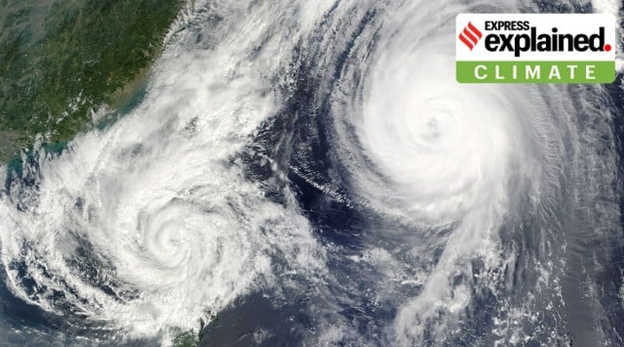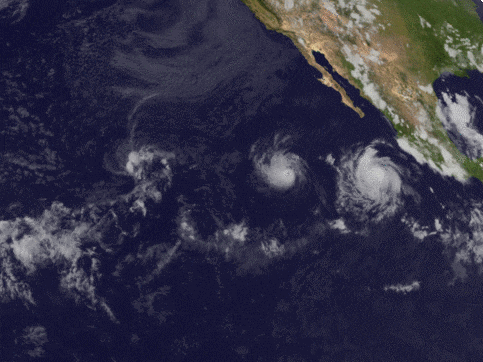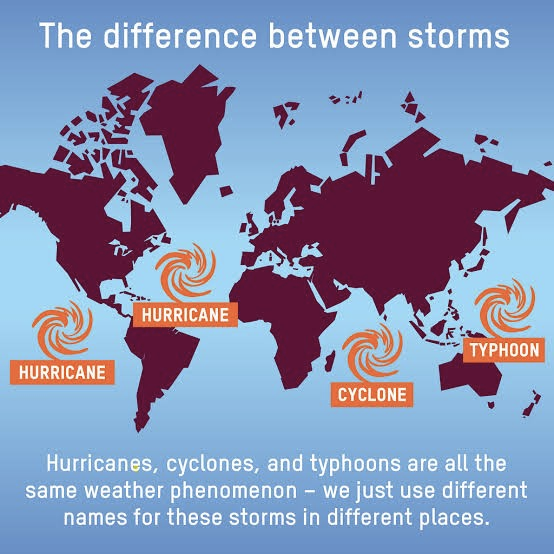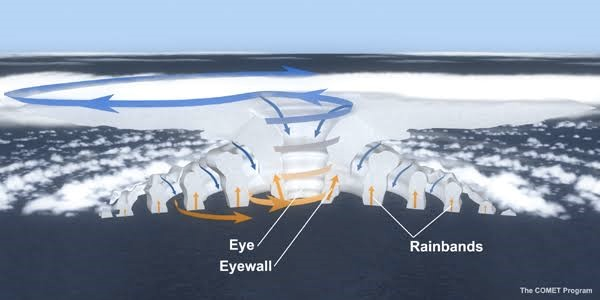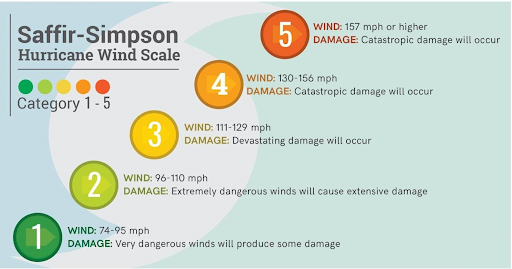The Fujiwhara effect: When cyclones ‘dance’.
Relevance
- GS Paper- 3 Disaster Management.
- Tags: #upsc #cyclone #fujiwaraeffect #hurricanes #IMO.
Why in the news?
The Fujiwhara effect
When two hurricanes (or cyclones, depending on where you live), spinning in the same direction, are brought close together, they begin ‘an intense dance around their common center’ – this interaction is called the Fujiwhara effect.
Recent Updates
- The United States west coast recently witnessed Hurricane Hilary (a sub-tropical storm by the time it hit the US), prompting the National Hurricane Centre (NHC) to issue its first ever tropical storm watch for parts of Southern California. This was the latest incident in a string of unusual weather phenomena in the region.
- Earlier this year, California witnessed an unusually wet winter, with at least twelve ‘atmospheric river’ storms battering the state. ‘Atmospheric rivers’ are vast airborne currents carrying dense moisture and hanging low in the atmosphere.
- In one of these storms, two small areas of low pressure were drawn together in a ‘dance’: instead of merging together, the stronger low pressure area became the dominant one in the system – displaying, for a brief moment, what is known as the ‘Fujiwhara effect’.
GOES-16 satellite imagery over the eastern Pacific Ocean from July 25 to August
Hurricane Irwin on the left collided with Hurricane Hilary on the right; the two merged before fading out over the ocean. As world temperatures rise, increasing the intensity and frequency of cyclones across oceans, we discuss this atypical phenomenon.
What is the Fujiwhara effect?
- As per the National Weather Service (NWS), when two hurricanes (or cyclones, depending on where you live), spinning in the same direction, are brought close together, they begin ‘an intense dance around their common center’ – this interaction between two cyclones is called the Fujiwhara effect.
- If one hurricane’s intensity overpowers the other, then the smaller one will orbit it and eventually crash into its vortex to be absorbed. On the other hand, if two storms of similar strengths pass by each other, they may gravitate towards each other until they reach a common center and merge, or merely spin each other around for a while before shooting off on their own paths.
- In rare instances, the two ‘dancing’ cyclones, if they are intense enough, may merge with one another, leading to the formation of a mega cyclone capable of wreaking havoc along coastlines.
- Identified by Sakuhei Fujiwhara, a Japanese meteorologist, this phenomenon first found mention in a paper published in 1921. Decades after the paper was published, it was observed for the first time over the western Pacific ocean, when typhoons Marie and Kathy merged in 1964.
- Additionally, the occurrence of the Fujiwhara effect also makes cyclonic systems harder to predict, as every interaction between two storm systems is unique and difficult to assess within the present climate models.
How is this related to today’s climate?
- Experts have noted the rising frequency of this unusual effect, attributing it to a rapidly warming world and the subsequent heating of ocean waters.
- Ravi Shankar Pandey, a research scholar at the Department of Atmospheric Science at the National Central University in Taipei, found that in the 4 years between 2013 and 2017, there were 10 cases of the Fujiwhara Effect in the northwest Pacific Ocean.
- Contending that a warming climate is giving rise to stronger cyclones, and thus, increasing the possibility of the Fujiwhara effect, Pandey noted that “there has been a 35 per cent increase in the strength of typhoons that have hit Taiwan between 1977 and 2016.
- This happened due to a 0.4 to 0.7°C rise in the sea surface temperature during these 40 years in the northwest Pacific,” as quoted by Down to Earth.
Hurricanes
- Hurricanes are the biggest and most violent storms on the planet.
- Tropical cyclones or hurricanes use warm, moist air as fuel, and therefore form over warm Equatorial water.
Mechanism
- When the warm, moist air rises upward from the surface of the ocean, it creates an area of low air pressure below.
- When this happens, the air from the surrounding areas rushes to fill this place, eventually rising when it becomes warm and moist too.
- An eye forms in the centre, it is the calmest part of the cyclone. Before the wind reaches the centre it gets warmed up and rises upwards.
- When the warm air rises and cools off, the moisture forms clouds. This system of clouds and winds continues to grow and spin.
- This disturbance is fueled by the ocean’s heat and the water that evaporates from its surface. Such storm systems rotate faster and faster.
- Storms that form towards the north of the equator rotate counterclockwise, while those that form to the south spin clockwise because of the rotation of the Earth.
Names in Different Regions of the World
- Typhoons: Tropical cyclones are known as Typhoons in the China Sea and Pacific Ocean.
- Hurricanes: In the West Indian islands in the Caribbean Sea and Atlantic Ocean.
- Willy-willies: In north-western Australia and;
- Tropical Cyclones: In the Indian Ocean Region.
Categorization of Hurricanes
- Hurricanes are categorized on the Saffir-Simpson Hurricane Wind Scale, which rates them on a scale of 1 to 5 based on wind speed.
Factors behind its intensification
- Ocean Temperature Factor: Hurricanes require ocean waters above 26 degrees Celsius to form. The west coast’s colder waters are less conducive to hurricane formation.
- Vertical Wind Shear: Strong upper-level winds can disrupt hurricanes’ structure and prevent their formation. West coast’s stronger wind shear reduces the likelihood of hurricanes.
- Trade Wind Influence: Trade winds, which steer hurricanes, play a pivotal role in directing them toward the east coast while diverting them away from the west coast.
- Westward Trajectory: Hurricanes originating in the eastern Pacific tend to move west-northwest, taking them away from the west coast and out to sea.
Climate Change induced factors
- Climate Change Impact: Climate change leads to more frequent and intense hurricanes. Rising ocean temperatures due to greenhouse gas emissions contribute to increased hurricane intensity.
- Ocean Heat Absorption: Oceans have absorbed 90% of excess heat from greenhouse gas emissions, leading to higher sea surface temperatures and stronger hurricanes.
- Marine Heat Waves: Elevated sea surface temperatures result in marine heat waves, intensifying storm systems and amplifying their impact on land.
- El Nino’s Role: El Niño, an abnormal warming of equatorial Pacific Ocean waters, can weaken wind shear in the eastern Pacific, creating conditions conducive to hurricane formation.
Source: Indian Express
Mains Question
Discuss the factors and mechanism for the formation of tropical cyclones. Also highlight, its impact on society and economy.

